In a year where headlines often push the narrative of full electrification, hybrid vehicles are quietly staging a comeback—not just in sales, but in performance metrics that matter most to everyday drivers. As the auto industry races toward a carbon-neutral future, consumers are finding themselves in the middle of a complex decision: Should they commit to full battery-electric vehicles (BEVs), or is a hybrid powertrain the more sensible transition step in 2025? The latest round of real-world testing reveals a surprising twist—many 2025 hybrid models are outperforming full electrics in areas like total driving range, cold-weather reliability, and maintenance costs. For a growing number of buyers, this isn’t just about environmental responsibility—it’s about practicality, performance, and peace of mind.
The Efficiency Paradox: Why Real-World Range Tells a Different Story
On paper, most EVs boast impressive ranges—400 to even 500 kilometers per charge is becoming standard. But real-world testing in both urban and highway environments tells a more nuanced story. A fully charged BEV may deliver 450 km in ideal lab conditions, but actual mileage drops sharply under real usage, particularly in winter or with highway driving at high speeds. In contrast, many 2025 hybrids—especially plug-in hybrid electric vehicles (PHEVs) with larger battery packs—offer a combined fuel-electric range that exceeds 900 to 1,000 kilometers without the need for long charging stops.
Independent auto tests conducted across cities like Toronto, Chicago, and Berlin this year showed a consistent pattern: full EVs underperformed in range when cabin heat, aggressive acceleration, and frequent stop-and-go conditions came into play. Hybrids, however, suffered no such dramatic drop, since the combustion engine provides a consistent backup. In highway scenarios, where BEVs often consume more energy due to higher speeds, hybrids maintained better efficiency by intelligently toggling between battery and fuel use.
For commuters in mixed-driving environments—think suburban families or rural professionals—the predictable fuel economy of a hybrid offers reliability where EVs can introduce range anxiety, particularly in regions with sparse charging infrastructure.
Winter Puts EVs to the Test—And Some Fail
Cold weather remains one of the biggest performance barriers for electric vehicles, and 2025 is no exception. Lithium-ion batteries become less efficient in freezing temperatures, reducing both range and charging speed. Cabin heating in EVs draws directly from the battery, unlike combustion-engine vehicles that can use engine heat to warm the cabin. The result? A 20%–30% drop in total range during winter is not uncommon among BEVs.
Hybrids fare much better in winter. Their internal combustion engines kick in when needed—not only to propel the vehicle but also to maintain optimal battery temperature and cabin climate. Toyota’s latest hybrid models, for example, performed significantly better than comparable BEVs in real-world cold-start scenarios in northern Europe and North America. Plug-in hybrids allow for short electric-only commutes but revert to gasoline when the battery range is depleted or conditions worsen.
The data paints a clear picture: for drivers living in colder regions, hybrids offer a more predictable and usable solution year-round without forcing lifestyle changes or introducing energy limitations.
Repair Costs and Downtime: Where Simplicity Still Wins
Another surprising area where hybrids have gained an edge is long-term reliability and repair costs. While EVs have fewer moving parts than internal combustion engines, they rely heavily on advanced electronics, high-voltage components, and specialized battery management systems. That makes repairs both costlier and more dependent on brand-specific service networks.
In contrast, hybrid vehicles—particularly those from legacy automakers—have matured into robust platforms with broad mechanic familiarity. Many PHEVs and traditional hybrids have been in the market for over two decades, meaning parts are more available and technicians better trained. In comparative ownership cost analyses from 2023–2024, several hybrid models had lower lifetime maintenance costs than their full electric counterparts, especially once battery degradation and charger-related service issues were factored in.
Another consideration is downtime. EV repairs, especially those involving battery systems or onboard software glitches, often require dealer visits and lengthy diagnostic processes. Hybrids, by contrast, can be serviced more broadly—even at general garages—and don’t suffer from single-point dependency on high-voltage battery systems.
Charging Access: The Infrastructure Gap That Keeps Hybrids Relevant
Public charging networks have expanded, but access remains patchy, especially outside major metro centers. Long-distance road trips in a full EV often require meticulous planning around charging stops, compatibility, and queue times. While home charging is convenient for homeowners with dedicated parking, it’s still out of reach for many apartment dwellers or renters.
This is where hybrids shine. With a gas engine as backup, they eliminate the need for charging altogether if necessary, while plug-in hybrids offer 40–90 km of all-electric range for daily errands—plenty for most commutes—while using gasoline for longer trips. It’s a best-of-both-worlds proposition that is increasingly winning over fence-sitters in the electrification debate.
According to 2025 driver behavior surveys in Australia, Canada, and Germany, one of the top reasons for choosing hybrids over EVs was “freedom from range planning.” While EVs cater to early adopters in tech-savvy urban cores, hybrids resonate with mainstream consumers who want flexibility over idealism.
Test Track vs. Traffic Jam: Real-World Testing Challenges the Lab Champions
Automotive press and EV enthusiasts often cite acceleration times, horsepower, and tech features as key advantages of full electric vehicles—and they’re right. BEVs often dominate in 0–60 mph tests, torque delivery, and digital cockpit experiences. But these lab-bench strengths fade when tested against the day-to-day demands of variable traffic, road conditions, and consumer habits.
Take regenerative braking, for instance. While EVs use it to extend range and reduce wear, real-world usage—especially among inexperienced drivers—can lead to discomfort or inconsistent stopping power in icy or slick conditions. Hybrids often manage regenerative systems more subtly, smoothing the transition between brake modes and increasing driver confidence, particularly among older or less tech-savvy users.
Additionally, full EVs often require drivers to adapt their driving style—planning charging stops, pre-heating the battery, or avoiding high-speed travel to conserve range. Hybrids ask for none of that. This frictionless transition appeals especially to families and drivers who view their vehicles as tools, not lifestyle statements.

Technology Balance: Why Hybrids Aren’t “Old News”
The automotive market has long positioned hybrids as transitional technologies—an interim step between gas and full electric. But 2025 marks a turning point. Rather than fading away, hybrids are evolving. Toyota, Honda, Ford, Hyundai, and even premium brands like Lexus and BMW have doubled down on hybrid R&D, releasing models with smarter battery management, dual-motor systems, and improved efficiency.
These vehicles aren’t relics—they’re refined. The 2025 Ford Escape Hybrid gets over 1,000 kilometers of range on a full tank and charges its electric reserve during braking. The Toyota Prius Prime delivers a compelling blend of 60+ km electric range and over 1,000 km total range. BMW’s X5 PHEV blends luxury with plug-in capability and gas backup for longer travel.
In these models, hybrid doesn’t mean compromise—it means choice. A driver can use zero fuel on a city commute Monday through Friday and still take a 600 km countryside weekend drive without a second thought.
Environmental Trade-offs: More Nuanced Than You Think
Environmentally conscious drivers often gravitate to EVs believing them to be the greener option—and over time, with green electricity sources, they often are. But lifecycle emissions analyses in 2024–2025 increasingly show a more nuanced picture.
The environmental impact of manufacturing a full EV—including rare earth mining, battery production, and global logistics—can exceed that of a hybrid by several years of operation. In countries where the power grid still relies on fossil fuels, driving a large EV can paradoxically result in higher per-kilometer CO2 emissions than operating a high-efficiency hybrid.
Hybrids, especially plug-in variants, can be an ideal “carbon bridge” in such regions. They reduce fuel consumption dramatically, leverage regenerative braking, and keep emissions lower without relying solely on an imperfect electrical grid. As the grid gets cleaner, so does the hybrid’s footprint, particularly if it runs mostly in EV mode during city driving.
Consumer Sentiment: Hybrid Demand Surges in 2025
Global sales data backs this shift. Hybrid vehicle sales have surged in 2025, with many dealerships reporting months-long waiting lists for popular models like the Toyota RAV4 Hybrid, Hyundai Tucson Hybrid, and the Honda CR-V Hybrid. Consumers cite reliability, low cost of ownership, and flexibility as top reasons for choosing hybrid over BEV.
Even in countries with aggressive EV incentives, hybrids are gaining favor. In the U.S., hybrid SUV registrations rose by over 30% year-over-year, while in the U.K., hybrid adoption outpaced BEVs in rural and suburban markets. The data shows that while full electrics dominate headlines, hybrids dominate real-world driveways.
Conclusion: Hybrid Isn’t Just a Compromise—It’s a Smart Choice
In the 2025 landscape of auto technology, hybrid vehicles are proving they’re not just transitional—they’re transformational. With better real-world range, lower cold-weather impact, and simpler maintenance requirements, hybrids are meeting drivers where they are, not where the industry thinks they should be. For users hesitant to commit to full electrification but eager to embrace cleaner, more efficient driving, hybrids offer the best of both worlds.
As charging infrastructure grows and battery technology evolves, the EV future may still arrive—but today, in the complexities of real roads, changing weather, and diverse driver needs, hybrids are doing more than holding their own. They’re outperforming expectations.

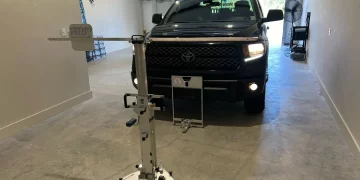
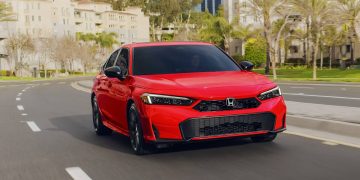
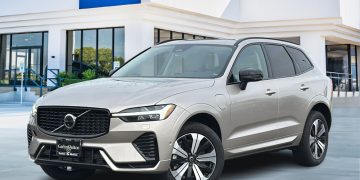


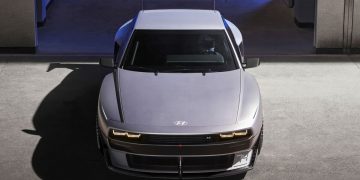


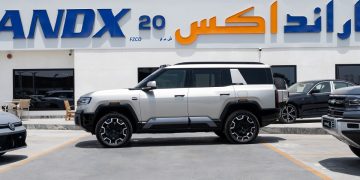
























Discussion about this post